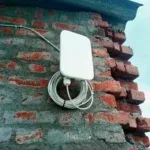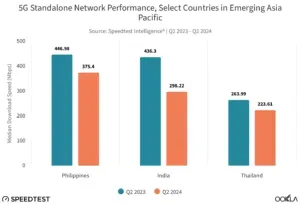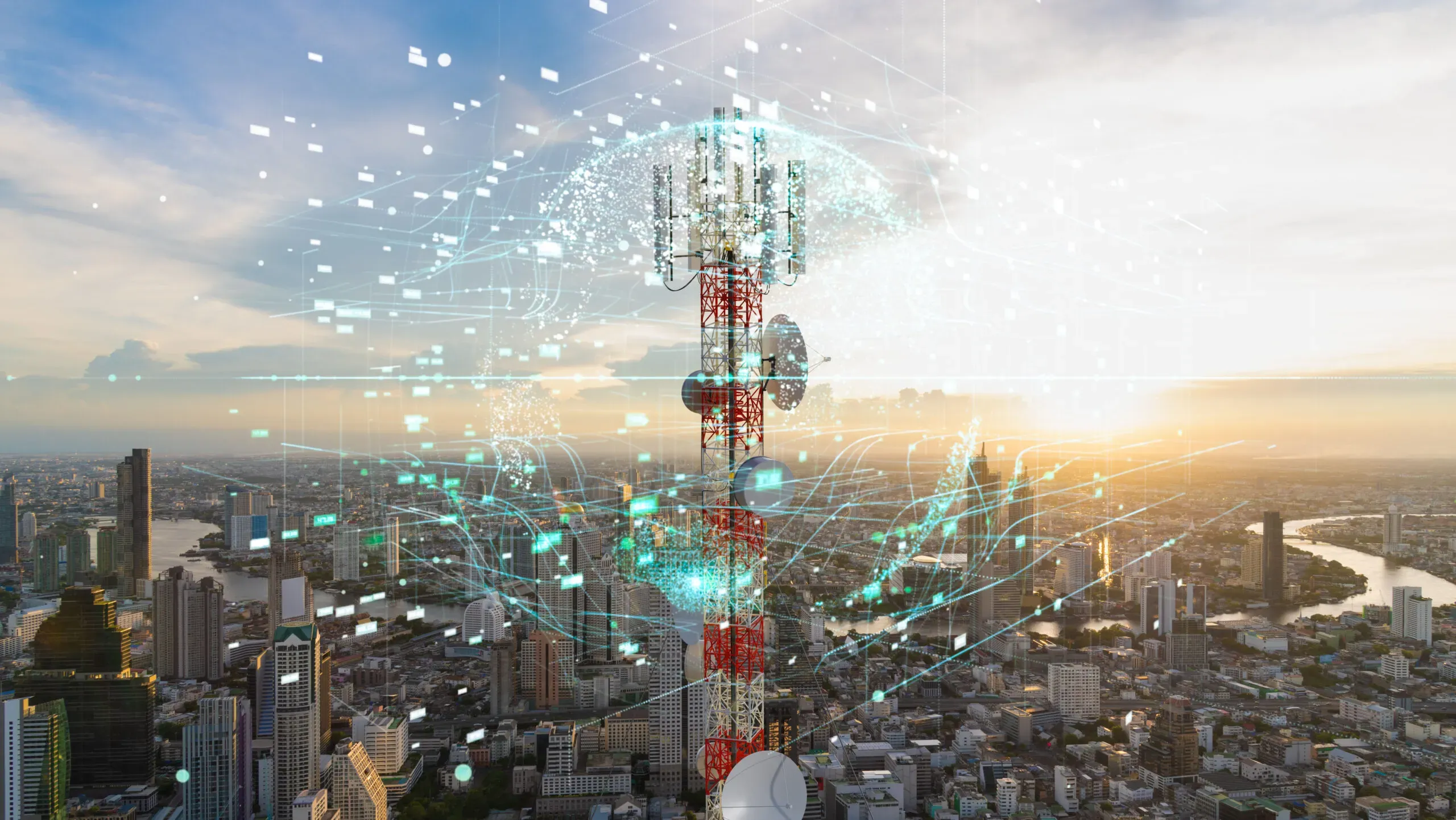JIO - Key Takeaways from the Indian Telecom Industry:
- Tariff Hikes: Given the competitive landscape, higher data consumption, and lower ARPU, we anticipate more frequent tariff hikes. The recent July 2024 hike has been positive, and its full impact is expected by March 2025.
- RJio’s Subscriber Base: While RJio saw a decline in wireless subscribers in Q2 FY25, this was primarily due to the removal of inactive users. Active user additions remained strong.
- Vi’s Capex: Vi’s planned capex of INR 500-550 billion over FY24-27 is contingent on successful debt financing. Given the significant network gap, Vi’s ability to gain market share from RJio and Bharti remains limited.
- RJio’s Home Broadband: RJio’s AirFiber (FWA) offerings have accelerated home broadband subscriber growth. The company aims to reach 35 million home connections by FY27, significantly boosting its broadband business contribution.
- RJio’s Enterprise Business: RJio is focusing on the Enterprise segment, winning network transformation deals and monetizing its 5G stack. The potential of this segment could further enhance value creation.
Standalone Valuation and Outlook for RJIO
| Operating metrics | FY20 | FY21 | FY22 | FY23 | FY24 | FY25 | FY26 | FY27 |
|---|---|---|---|---|---|---|---|---|
| EoP wireless subs (m) | 388 | 424 | 405 | 431 | 471 | 473 | 485 | 505 |
| Wireless ARPU (INR/month) | 130 | 141 | 150 | 173 | 174 | 191 | 212 | 237 |
| EoP Broadband (inc. FWA) subs (m) | 1 | 3 | 5 | 8 | 11 | 18 | 27 | 35 |
| Blended broadband ARPU (INR/month) | — | 662 | 496 | 503 | 503 | 484 | 500 | 500 |
| Overall subscribers at end-period (m) | 389 | 426 | 410 | 439 | 482 | 491 | 512 | 540 |
| Blended ARPU (INR/month) | 130 | 143 | 153 | 178 | 181 | 200 | 225 | 253 |
| Financials | ||||||||
| Revenue | 543 | 699 | 770 | 908 | 1,001 | 1,166 | 1,356 | 1,594 |
| EBITDA | 216 | 309 | 376 | 467 | 524 | 628 | 752 | 919 |
| Overall EBITDA margins (%) | 39.7 | 44.2 | 48.9 | 51.4 | 52.4 | 53.9 | 55.5 | 57.7 |
| Net income | 56 | 120 | 148 | 182 | 205 | 265 | 332 | 424 |
- Base Case: We forecast an ARPU CAGR of 12% over FY24-27, driven by tariff hikes, increased FWA contribution, and market share gains. This leads to a valuation of INR 530 per share for RIL’s stake in Jio Platforms.
- Bear Case: With a lower ARPU CAGR and slower subscriber growth, the valuation drops to INR 425 per share.
- Bull Case: A higher ARPU CAGR and faster subscriber growth could push the valuation to INR 665 per share.
- We anticipate a likely bull case as FWA adoption could give a major boost to EBITDA, PAT& Revenues.
- The 5G infrastructure which is deployed by JIO has 100-200MHz channel of large channel bandwidth has enough capacity to usher a new era of FWA.
| Companies | Enterprise Value | Market cap | EV/EBITDA (X) | Net debt/EBITDA (X) | EBITDA margin (%) | EBITDA CAGR | |||||||
| (USD b) | (USD b) | 2025 | 2026 | 2027 | 2025 | 2026 | 2027 | 2025 | 2026 | 2027 | 2024-27E | ||
| Bharti Airtel | 133 | 113 | 12.3 | 10.6 | 8.9 | 1.9 | 1.3 | 0.5 | 53.5 | 54.8 | 56.5 | 15.80% | |
| Vodafone Idea | 35 | 7 | 15.6 | 13.9 | 11.9 | 12.5 | 11.9 | 10.2 | 41.8 | 42.7 | 45 | 12.10% | |
| RJio | 147 | 128 | 18.4 | 15.4 | 12.7 | 2.8 | 2 | 1.2 | 53.9 | 55.5 | 57.7 | 20.60% | |
| Y/E March | FY20 | FY21 | FY22 | FY23 | FY24 | FY25E | FY26E | FY27E |
|---|---|---|---|---|---|---|---|---|
| Basic (INR) | ||||||||
| EPS | 1.2 | 2.7 | 3.3 | 4 | 4.5 | 5.9 | 7.4 | 9.4 |
| Cash EPS | 2.9 | 5.2 | 6.3 | 8.2 | 9.3 | 11 | 13.1 | 15.9 |
| BV/Share | 38 | 40.7 | 44 | 48 | 52.5 | 58.4 | 65.8 | 75.2 |
| Valuation (x) | ||||||||
| FCF per share | -7.7 | 1.5 | 0.6 | 3.2 | 0.4 | 1.9 | 3.8 | 7.6 |
| Return Ratios (%) | ||||||||
| RoE | 5.3 | 6.8 | 7.8 | 8.8 | 9 | 10.6 | 11.9 | 13.4 |
| RoCE | 5.2 | 6.9 | 7.4 | 6.6 | 6.1 | 7.2 | 8.6 | 10.6 |
| RoIC | 6.2 | 7.6 | 8.5 | 9.8 | 11.9 | 13.6 | 14.1 | 16.2 |
| Working Capital Ratios | ||||||||
| Fixed Asset Turnover (x) | 0.3 | 0.4 | 0.3 | 0.3 | 0.3 | 0.3 | 0.3 | 0.3 |
| Asset Turnover (x) | 0.2 | 0.3 | 0.3 | 0.2 | 0.2 | 0.3 | 0.3 | 0.4 |
| Debtor (Days) | 11 | 7 | 20 | 10 | 6 | 6 | 7 | 10 |
| Creditor (Days) | 32 | 12 | 10 | 13 | 16 | 14 | 12 | 10 |
| Leverage Ratio (x) | ||||||||
| Current Ratio | 2.3 | 1.6 | 1.3 | 0.7 | 0.7 | 0.7 | 0.7 | 0.7 |
| Interest Cover Ratio | 2.1 | 5 | 5.5 | 6.9 | 7.8 | 8.6 | 9 | 9.5 |
What is JIO Airfiber and why it is disrupting the broadband access ?
- Fixed wireless access (FWA) will be one of the first 5G use cases.
- Certain regions present challenges in terms of deploying Jio Fiber infrastructure, and hence, the JIO launched Airfiber to address these complexities.
- This uses pan India 5G network and advanced wireless technology to bypass the need for last mile fiber connectivity
- FWA inherits dimensioning properties from mobile broadband; the data rate which users experience will vary with the position of the household relative to the base station site.
- 10x increase in connection- Through optical fiber, the company can connect 15k connections/day but with Jio Fiber, the company can connect 150k connections/ day
- This also increases the addressable market to over 200m homes
How is JIO Airfiber different from traditional Fixed Broadband ?
FWA is a wireless technology that delivers high-speed internet to homes and businesses without the need for physical cables. It utilizes radio signals to provide broadband access, supporting both 4G LTE and 5G technologies.
Key benefits of FWA:
- High Speed and Low Latency: 5G FWA offers speeds comparable to fiber optic connections, making it suitable for demanding applications like streaming, gaming, and video conferencing.
- Flexibility and Cost-Effectiveness: FWA is easier and more affordable to deploy than traditional wired connections, especially in areas with challenging terrain or existing infrastructure.
- Bridging the Digital Divide: FWA can reach remote and underserved areas, providing internet access to communities that may not have been previously connected.
Overall, FWA is a powerful tool for expanding internet connectivity and improving digital access for individuals and businesses alike.
Is Jio's 5G network accessible to everyone across India?
- Rapid Expansion: Jio is rapidly expanding its 5G network, aiming for nationwide coverage by December 2024.
- Market Leadership: Jio currently operates the largest 5G network in India, with 85% of all 5G cells.
- Advanced Technology: Jio’s 5G network utilizes advanced technologies like standalone architecture, carrier aggregation, and network slicing with AI/ML.
- High-Speed Connectivity: Jio’s 5G network offers significantly higher speeds and lower latency compared to 4G.
- Global Innovation: Jio is a global leader in 5G technology, pioneering the use of mm-wave spectrum and developing its own 5G stack.
- Transition to Tech Company: Jio is transforming from a telecom operator to a technology company, focusing on innovation and patent filings.
In essence, Jio is leading the 5G revolution in India, providing high-speed internet connectivity to millions of users and driving technological advancements.
How much faster is 5G compared to 4G?
- Median 5G download speeds are 18 times faster than 4G. 5G performance has increased across early 5G adopters in most of the telecom circles, Kolkata achieved the fastest median 5G download speeds in Q4 2023 at above 301 Mbps. Jio experienced a top median 5G download speed of 506.25 Mbps in Kolkata, while Airtel of 268.89 Mbps in Delhi.
When compared 5G and 4G performance in India during 2024: •Median 5G download speed is 18 times that of 4G LTE (301.12 Mbps vs. 13.30 Mbps), and •Median 5G upload speed is 4.5 times 4G LTE (16.05 Mbps vs 3.55 Mbps)
Speedtest by Ookla
JIO FWA Installation Pictures













